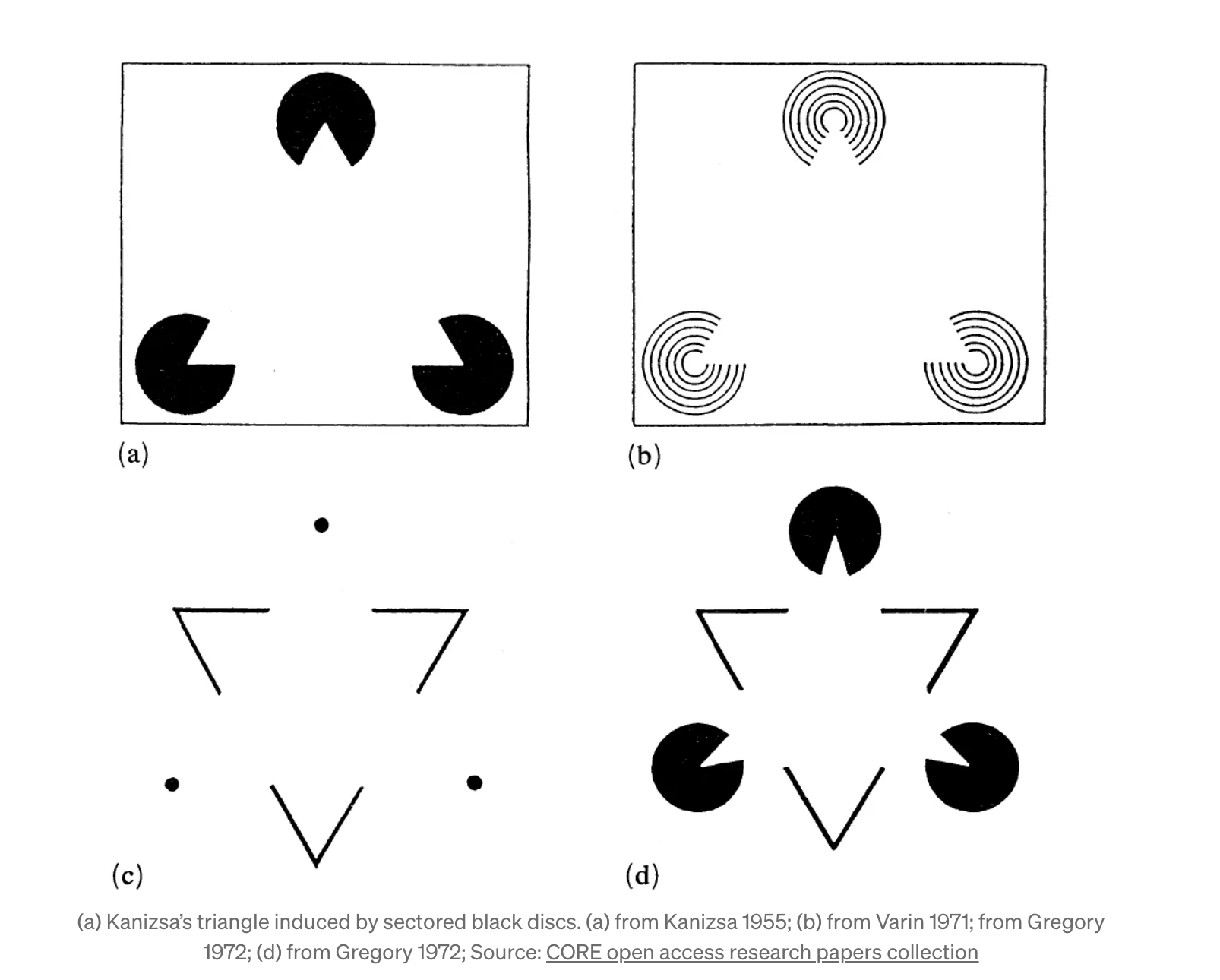The Power of Perception: How It Shapes Our Reality.
How we view events, people, and situations influences our decisions and experiences. Perception involves our beliefs, emotions, and past experiences. Knowing how perception operates can enhance our personal and work lives. This discussion will explore how perception shapes our reality and affects individuals and businesses, including Stephen Hawking’s theory, Gestalt’s Principles, Spotify’s business model, and President Trump’s campaign tactics.
1. Understanding Perception
Perception is how we understand sensory information and make sense of our surroundings. Our background, culture, and experiences shape it. Two people can see the same event but interpret it differently based on their perceptions. This subjectivity can cause misunderstandings, conflicts, and even create opportunities.
“The thing about smart people is that they seem like crazy people to dumb people.”- Stephen Hawkings, English theoretical physicist and cosmologist.
It means that intelligent people often think in ways that might seem unusual or different to those who don't understand their thought process. When smart people express complex ideas or challenge common beliefs, those who aren't as knowledgeable might see them as strange or "crazy." In other words, what seems logical and insightful to one person can appear confusing or nonsensical to another, highlighting how differences in understanding can lead to misunderstandings.
To understand Hawking's meaning, we should first realize that intelligence and sanity are not objective traits. They rely heavily on personal views shaped by how we understand the world that we live in during the times we are at.
Applying Gestalt Principles to Perception in Data Visualization
The human brain is wired to recognize structure, logic, and patterns, aiding our understanding of the world, even in chaotic situations. Gestalt principles, formulated by German psychologists in the 1920s, explain how we perceive complex images by subconsciously organizing disparate parts into a cohesive whole, regardless of their unrelated nature.
The human eye perceives a triangle instead of circles, angles, and dots. This reflects how our brains fill gaps and create order. Gestalt principles can enhance data visualization, but may also hinder it. Different sources outline varying sets of principles; Wikipedia has one, Scholarpedia another, and some design websites provide yet others. Some sources list five principles, while others mention up to ten.
2. Perception in Personal Relationships
Perception is important in personal relationships. How we interpret others' actions and words can either build connections or cause problems. For instance, if someone is late to a meeting, one person might see it as rude, while another might think they are just busy. Recognizing our perceptions and questioning them can help us be more understanding and improve communication.
If accepting differing perceptions can resolve issues, why do conflicts persist among cultures and communities?
-Different Values and Beliefs: Cultures often have unique values, rich traditions, and deeply held beliefs. What is considered respectful or appropriate behavior in one culture might be perceived as rude or inappropriate in another, leading to potential misunderstandings and confusion between individuals from different backgrounds.
How is Eastern culture different from Western culture?
Culture shapes societies significantly, with remarkable diversity in practices and beliefs worldwide. Eastern and Western cultures are two notable spheres with unique characteristics.
-Individualism vs. Collectivism:
A key difference between Eastern and Western cultures is their focus on individualism versus collectivism. Western cultures value individual freedom and personal achievement, while Eastern cultures prioritize collective harmony, familial ties, and societal obligations. This leads Eastern cultures to emphasize group needs over personal aspirations, fostering stronger communal bonds and interconnectedness.
For interactive world maps and pick-your-own-countries 3-d graphs of Hofstede dimension scores, check Hofstede's Globe in the Geert Hofstede online exhibition "An engineer's Odyssey". Resource: https://geerthofstede.com/culture-geert-hofstede-gert-jan-hofstede/6d-model-of-national-culture/#:~:text=The%206%20dimensions%20model%20of%20national%20culture%20by,scale%20that%20runs%20roughly%20from%200%20to%20100.
-Social Hierarchy and Power Distance:
Views on social hierarchy differ greatly between Eastern and Western cultures. Western societies usually value equality and a flatter social structure, while Eastern cultures place more importance on hierarchy, respect for authority, and a clearer power gap among social classes and generations. This hierarchy affects family relationships, workplace dynamics, and social customs.
-Communication Styles:
Communication styles vary significantly between Eastern and Western cultures. Western cultures prefer direct communication, focusing on personal opinions and assertiveness. In contrast, Eastern cultures often use indirect communication, utilizing non-verbal signals and context to express meaning. This difference can cause misunderstandings between people from different backgrounds, underscoring the importance of cross-cultural communication skills in today's globalized world.
-Time Orientation:
Eastern and Western cultures have distinct time orientations. Western cultures often adopt a monochronic perspective, emphasizing punctuality and tasks, while Eastern cultures, influenced by a polychronic perspective, prioritize relationships, harmony, and adaptability, leading to more flexible schedules.
-Expectations and Norms: Each culture has its own unique social norms and expectations for behavior. When these norms differ significantly, it can create a sense of confusion or even potential conflict among individuals. For example, approaches to teamwork, the perception of authority, or methods of conflict resolution can vary widely from one culture to another, leading to misunderstandings and challenges in collaboration.
-Stereotypes and biases: Thinking we know how other cultures behave can cause misunderstandings. If people rely on stereotypes, they might misunderstand others' actions or intentions.
-Fear of the Unknown: Differences can create discomfort. Change is uncomfortable. People may fear what they don't understand, leading to resistance or hostility toward those from different backgrounds.
Respecting differences and open communication can reduce conflicts and encourage collaboration among diverse groups.
3. Perception in Business
For businesses, perception is everything. How customers perceive your brand can determine its success or failure. A company that is seen as trustworthy, innovative, and customer-centric can build a loyal following, while one with a negative perception may struggle to attract and retain customers. Here are a few ways perception impacts businesses:
Brand Image: The visual and emotional representation of a brand influences consumer behavior. Effective branding creates a positive perception that resonates with customers.
Customer Experience: Perceptions of customer service can significantly affect loyalty. A single negative experience can lead to a loss of customers, while consistently positive interactions can foster brand ambassadors.
How did Spotify succeed worldwide with its free and paid model while helping local and international artists?
Spotify’s global success can be attributed to several key business models and strategies:
Freemium Model
In 2006, Spotify launched a free music service to compete with free, pirated music. Most of its money comes from users switching to a paid subscription.
Spotify offers a two-tier system: a free, ad-supported version and a premium subscription model. This approach allows users to access the platform without any cost, providing an entry point for new users. Many free users become paying subscribers for an ad-free experience and extra features such as aiming for a better user experience. Their goal was to enhance user experience.
Subscription Revenue
The premium subscription model makes up a large part of Spotify's revenue. In 2018, 46% of Spotify users were premium, generating 90% of total revenue. Users pay monthly for perks like offline listening, better sound quality, and no ads. This steady income helps Spotify invest in technology and content.
Personalization and Recommendation Algorithms
Spotify uses algorithms to analyze user behavior, offering personalized playlists and song recommendations. Features like Discover Weekly and Daily Mix help listeners find new music based on their tastes.
Partnerships and Collaborations
Spotify has formed strategic partnerships with various artists, labels, and brands. Exclusive releases, promotional deals, and collaborations with high-profile artists help drive user engagement and attract new subscribers.
Spotify's success comes from a free and paid model, a wide range of content, personalized experiences, smart partnerships, and creative marketing. By constantly meeting user needs and using technology, Spotify has become a leader in music streaming worldwide.
2. Marketing Messaging: The language and imagery used in marketing materials shape consumer perception. Clear, authentic messaging that aligns with customer values can enhance engagement.
An example would be the Previous US President Donald Trump. Donald Trump effectively used perception as a strategic tool during his election campaigns, influencing voter attitudes and shaping his public image in several key ways:
Branding and Messaging
Trump utilized strong branding and simple, memorable slogans like "Make America Great Again" to create a clear and compelling message. This resonated with many voters who felt disillusioned and sought a return to perceived better times. His branding established an identity that was easy for supporters to rally around.
His rhetoric often emphasized division, creating a narrative of "us versus them" that resonated with many supporters. This included appealing to nationalistic sentiments and highlighting issues like immigration and trade, which he framed as threats to American jobs and security. This approach helped solidify his base and mobilize voters around shared concerns.
Challenging the Status Quo
Trump positioned himself as an outsider challenging the political establishment, which appealed to voters frustrated with traditional politicians. By portraying himself as a disruptor , he tapped into a widespread desire for change, making voters feel empowered to support a candidate who promised to shake up the system.
Media Manipulation
Trump leveraged social media, particularly Twitter, to communicate directly with the public, bypassing traditional media filters. His provocative statements often garnered significant media coverage, which further amplified his messages. This strategy allowed him to dominate news cycles and frame narratives on his own terms.
Creating a Strong Persona
Trump crafted an image of confidence and decisiveness, portraying himself as a successful businessman capable of making tough decisions. This perception of strength appealed to voters looking for leadership during uncertain times, particularly regarding economic and national security issues.
Trump's perception skills were crucial to his electoral success. By branding himself, shaping media narratives, and appealing to voter emotions, he secured a strong connection with supporters, helping his presidential win. These strategies emphasize the significance of perception in politics, business, and communities.
Navigating Perception
Navigating perceptions effectively can enhance communication, reduce conflicts, and foster better relationships.
1. Self-Awareness
Reflect on Your Perceptions: Recognize your biases and their impact on your views. Consider how your background and beliefs shape your perception of others.
2. Active Listening
Engage Fully: Take the time to listen carefully and attentively to what others are saying without interrupting their thoughts. It is important to show genuine interest in their unique perspectives and feelings, as this fosters a supportive communication environment.
Ask Clarifying Questions: To encourage a deeper understanding of the conversation, ask open-ended questions that allow for elaboration and clarification of their points of view. This approach can lead to more insightful discussions and a greater connection among participants.
3. Creative Thinking & Understanding Others
How can we create environments that foster innovation? Encourage dialogues, whether 1-on-1 or in small groups, and promote open communication for all to share their views. Recognize and emphasize the unique strengths and valuable qualities of both individuals and groups in order to foster a more positive and encouraging perception within various settings.
Be Open to Change: Understand that perceptions evolve. Stay flexible and adjust your views with new information.
4. Practise Intellectual Humility
Practicing intellectual humility involves recognizing the limits of your knowledge and being open to new ideas, perspectives, and feedback. Accept feedback as a chance to improve, not as a personal critique. Think about what you can gain from it.
Navigating perceptions requires self-awareness, empathy, and open communication. By actively listening, challenging assumptions, and fostering dialogue, you can enhance your relationships and create a more inclusive environment. These steps not only improve understanding but also pave the way for collaboration and mutual respect.
At the end of the day, is perception ultimately good or bad for individuals or for businesses as a whole? Or does it ultimately harm one’s standing and reputation in the community and among peers, leading to potential long-term consequences that could affect future opportunities?
Hire Bright Design Studio for comprehensive market or brand research to effectively improve how people perceive your brand and business in today’s competitive landscape. Write to us for a free quote: hello123@brightdesignstudio.net
References:
https://towardsdatascience.com/the-psychology-behind-data-visualization-techniques-68ef12865720
https://www.bbc.com/news/science-environment-43408961
https://americusreed.com/the-art-of-persuasion-unraveling-trumps-marketing-strategy/
https://www.milnerltd.com/blog/3-communications-lessons-we-can-learn-from-donald-trump/





